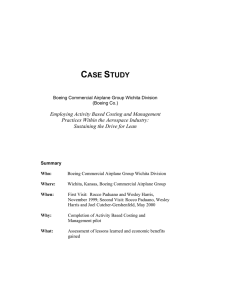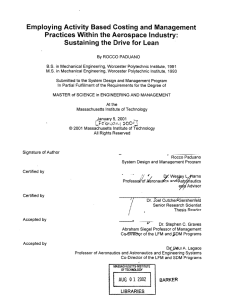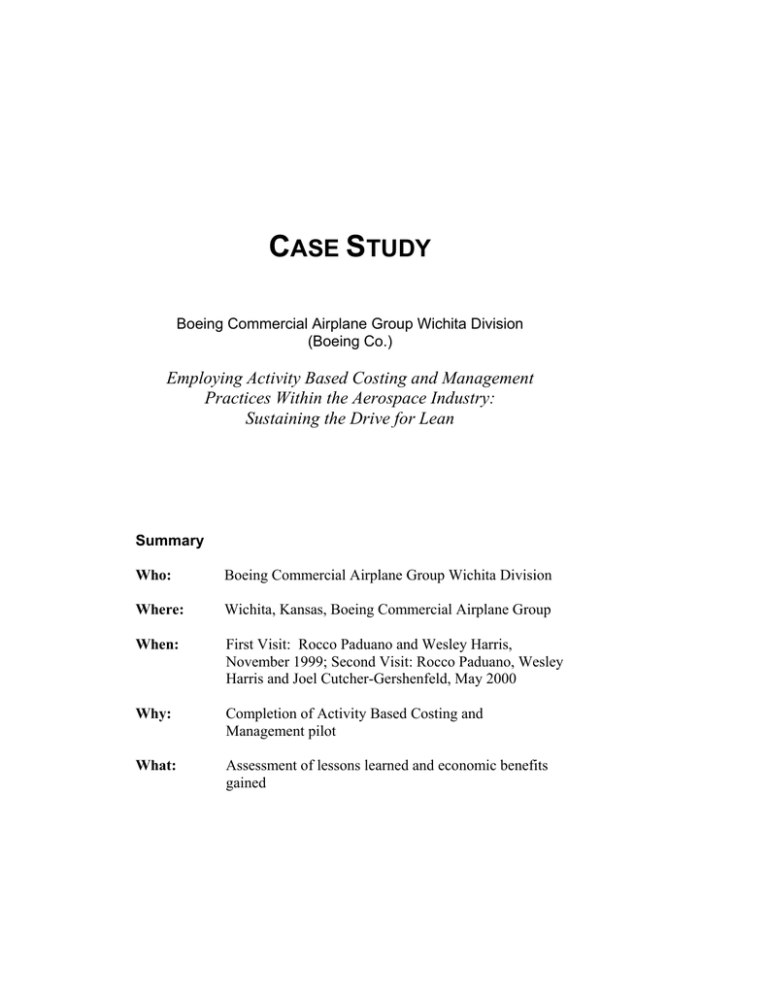
CASE STUDY
Boeing Commercial Airplane Group Wichita Division
(Boeing Co.)
Employing Activity Based Costing and Management
Practices Within the Aerospace Industry:
Sustaining the Drive for Lean
Summary
Who:
Boeing Commercial Airplane Group Wichita Division
Where:
Wichita, Kansas, Boeing Commercial Airplane Group
When:
First Visit: Rocco Paduano and Wesley Harris,
November 1999; Second Visit: Rocco Paduano, Wesley
Harris and Joel Cutcher-Gershenfeld, May 2000
Why:
Completion of Activity Based Costing and
Management pilot
What:
Assessment of lessons learned and economic benefits
gained
Introduction
Activity Based Costing and Management (ABCM) is one of many new
financial and accounting tools aimed at providing more complete,
better-aligned data on economic performance. It is important to
explore early experiences with this concept since it represents a new
set of “rules” that can have implications for all stakeholders in an
aerospace enterprise.
ABCM is of particular interest with respect to lean practices and
principles since it links the cost of production or services to the
relevant support activities, which is helpful in targeting continuous
improvement efforts. For example, time spent in training will be
differentiated from time spent on production of a given product. This
leads to a more accurate allocation of overhead charges. Formerly
such costs may have been allocated in ways that
ABCM…links the
obscured their source.
cost of
production or
Companies who are focusing resources on
services to the
organizational learning initiatives will also find
relevant support
that ABCM processes add value to these efforts.
activities.
Employees engaged in operational improvement
and activity measurement are also becoming more
informed and aware of potentially valuable organizational detail.1 For
example, the true costs of efforts such as cycle time reduction and
quality improvement can be clarified with the addition of activitybased costing techniques.
The motivation for ABCM lies in the value of recognizing true costs,
which will assist managers and other leaders in making critical
choices, such as the decision to manufacture goods internally, rather
than involve an external contractor. It will also help managers
understand how their decisions can impact bottom line shareholder
value. In principle, ABCM is designed to help firms shift their
priorities from individual products to the overall manufacturing
environment.
1
Kaplan, R. S. and R. Cooper 91998). Cost & Effect: Using Integrated Cost
Systems to Drive Profitability and Performance. Boston, Harvard Business School
Press.
1
A recent national study of aerospace facilities suggests that ABCM
practices are more common among suppliers. 2 The study also found
ABCM to be more common in smaller facilities, producing multiple
distinct products, in medium to high manufacturing volume. In one
sample of 196 aerospace facilities, less than 5% of the facilities
reported high-level usage of ABCM principles.
This case study hopes to deepen understanding of ABCM principles by
looking beyond the survey data and tracing early experience in an
aerospace setting. Note that these are just pilot demonstration
initiatives and do not represent full-scale implementation.
In
presenting this study, we are not advocating for or against this
particular approach to financial accounting – just seeking to better
understand its implications.
The study is located in a large final assembly operation: The Boeing
Commercial Airplane Group (BCAG) Wichita Division of the Boeing
Company (hereafter referred to as BCAG Wichita). BCAG Wichita is
a cost center that has introduced ABCM. It is designed to support a
comprehensive lean production strategy encompassing everything
from asset management, to design for manufacturability, to cost of
quality.
This case study contains two examples of ABCM modeling, which
include tracking the benefits that can be gained through effective
ABCM implementation. The overarching metric for both examples is
cost savings through activity analysis designed to uncover non-value
added processes that depress value creation capabilities. Middle
management originated and championed both of these ABCM
initiatives. The study describes a number of barriers and enablers to
widespread adoption of ABCM at the facility level. The most critical
element in the success of these implementation projects was the ability
to change ingrained elements of organizational culture.
Background: The Cost Management Strategy
BCAG is the world’s largest manufacturer of commercial airplanes. It
comprises approximately 60% of Boeing’s total revenues. BCAG
Wichita is a cost center manufacturing plant producing fuselages,
noses, struts, nacelles, and thrust reversers for 737, 747, 757, 767, and
777 airplane models. In May 1999, the plant employed approximately
16,835 employees directly, and was responsible for indirect
employment of 53,100 workers within the state of Kansas. It averaged
2
2
MIT/LARA National Survey of the Aerospace Industry, 2000.
$1.1 billion in annual payroll, purchased $900 million yearly in raw
materials and purchased parts, boasted 100,000+ part numbers,
occupied an area equivalent to 1,300 acres, and its manufacturing
facility covered 13.4 million square feet. As part of its overall drive to
gain and retain world-class aerospace manufacturing status, BCAG
Wichita is focused on developing a lean, efficient design and
production system supported by an effective cost management
strategy.
The cost management strategy supports initiatives designed to link the
manufacturing process and support activities so as to simplify the
whole production process, while maximizing benefits from the use of
lean business practices. Cost management strategy initiatives include
simplifying production, shortening flow and cycle times, increasing
quality and inventory turnover, identifying core products and
processes, and linking the design and
manufacturing process to decrease The highest hurdle in
product time-to-market. ABCM links achieving [ABCM
and supports the manufacturing implementation] lies in
process. It provides information to moving the…financial
tailor business streams and material department from its classic
management, costs of activity and accounting role of
processes, value added versus non- scorekeeper or policeman
value added analysis and profitability to the role of business
analysis used to improve the make partner.
versus buy decision-making process.
ABCM also provides analysis of set-up
and run costs, costs of scheduled and unscheduled maintenance, costs
of asset failure, and costs of manufacturing capacity, thereby allowing
manufacturing managers to manage the assets under their control more
effectively. Finally, ABCM provides analysis on the costs of design
changes in configuration as impacted on the manufacturing floor, costs
of incorporating complexity into a configuration design, and the costs
of quality.
The highest hurdle in achieving this type of cost management
architecture lies in moving the corporate financial department from its
classic accounting role as scorekeeper or policeman to the role of
business partner. In a business partner role, the corporate financial
department can support strategic decisions relevant to the company’s
continued competitive advantage by providing financial data that
highlights the impact of these decisions. BCAG Wichita views a
successful implementation of ABCM as one that fulfills three major
roles:
3
•
•
•
Addresses the size, complexity, and diversity of the
manufacturing process,
Facilitates the integration of financial decision makers into a
more supportive business partnership role, and
Implements effective cost management strategy initiatives.
The initial introduction of ABCM began without the full backing of
upper management. However, the finance and operations departments,
which championed the introduction of ABCM practices, contracted
with management consulting firms and academicians possessing
know-how on ABCM implementations and value-based management.
In time, this effort has achieved higher-level recognition and support
from management. Positive support for the ABCM initiatives was also
expressed by shareholder representatives such as R.J. Glasebrook II;
Managing Director, Senior Equity Portfolio Manager, and Analyst at
Oppenheimer Capital, Boeing Company’s largest investor:
On the factory floor, it’s been clear for several years that
[Boeing Co.] was handicapped in not having robust and
sufficient ABC systems. I understand now [that] those
are being deployed, hopefully rapidly, and will give
[Boeing Co.] a huge leg up, because it’s crucial to know
where [the company is] making money. [Boeing Co.
has] got to eliminate the bleeders; [the company has] got
to pump assets and money where [its] best opportunities
are, but first [it] need[s] to identify where value is
created or lost.3
From the onset, activity analysis was seen as the only viable analysis
methodology to pursue in order to support and achieve the goals set in
the cost management strategy. Attention to detail was critical as
BCAG Wichita shifted its culture from a primarily product oriented
focus, where delivery schedules were the important performance
metric, to a process oriented focus, where cost management and
activity analysis were equally as important.
Putting an ABCM System in Place
Due to the unique characteristics of activity-based cost accounting,
BCAG Wichita was able to design an ABCM system to meet its
unique requirements. The ABCM model organizes activities in terms
of their relationship to final cost objects (i.e.: the different products
produced at BCAG Wichita). This system breaks down activity costs
3
4
Glasebrook, R.J., Boeing Co. Senior Manager’s Meeting, May 4th, 1999.
into three categories and links these activity costs to cost objects. The
three activity cost categories are defined as:
•
•
•
Primary costs – the activity’s cost can be assigned
directly to the cost object.
Secondary costs – the activity has a cause and effect
relationship to the cost object, even though there might
be no direct relationship. These secondary activities are
first driven to the primary activity center through
location drivers, and subsequently to the cost object
through activity drivers.
Tertiary costs – the activities have little or no cause and
effect relationship to the cost object and costs are
driven to the cost object using volume drivers such as
labor hours or labor dollars.
An ABCM model is designed to accommodate each of the facility’s
major business units, including support, engineering, tooling,
fabrication, and assembly. Resources map to activities via the
primary, secondary, or tertiary activity costs, which subsequently map
to end items or parts produced in each of the major business units.
Throughout the implementation, maintenance, and update of the
model, the ABCM implementation team focuses on a set of guidelines
that encourage them to:
•
•
•
•
•
•
•
•
Understand the strategic nature of the business.
Obtain top management support.
Clearly define goals and objectives.
Form cross-functional teams.
Build internal expertise, and not rely exclusively on
complex software and external consultants.
Empower team members.
Focus on changing behavior.
Focus on long term continuous improvements.
ABCM enables managers to view labor, overtime, and support as they
are “absorbed” by the different manufacturing activities. Activities
that absorb labor, overtime, and support can be categorized as value
added or non-value added. In principle, ABCM will point to the
elimination of “non-value add” activities, rather than unilateral headcount reductions as a cost saving strategy. For example, ABCM might
help identify a rework area as the site of non-valued added activities
and then, utilizing the same workforce, focus effort on eliminating
rework. It is this logic that makes ABCM a potentially important
subject of study for labor and management leaders.
5
As the following example illustrates, ABCM gives the manufacturing
manager the power to target processes for elimination or improvement.
Thus, the manufacturing manager can identify specific activities with
lean initiatives designed to reduce the cost of the non-value added
activity. Ultimately, ABCM could tie together the whole organization
and begin to nurture a culture based on waste elimination, response
time reduction, product and process design simplification, and quality
improvement.
BCAG Wichita began its ABCM efforts by working to analyze and
strengthen its own process accounting system. Some areas that needed
improvement are identified below.
•
Costs were not allocated based on a cause and effect
relationship. In fact, the system generally overemphasized
direct labor costs while not accounting for the impact of
manufacturing volume and product complexity. Using
ABCM tools, the division introduced activities as metrics
for determining the true ownership cost of a product by
determining the amount of resources absorbed by particular
production activities.
•
The current accounting system was limited to production
costs and did not account for general or administrative
costs. Additionally, customer and supplier costs were also
not easily identified using information contained within the
process accounting system. For example, using ABCM
production managers can identify the true ownership of
costs in situations such as when parts are offloaded to
vendors, which might introduce potential delays or quality
issues.
•
The current accounting system contained information
primarily designed to satisfy the needs and requirements of
outside customers (i.e.: shareholders, SEC, IRS, etc.) and
did not focus on the collection of data that facilitates
operational analysis. ABCM rectified this problem by
providing cost data on a timely basis that is useful from
operational decision-making purposes.
A manager at BCAG summarizes the division’s hopes for widespread
implementation of ABCM practices as the ability to:
Identify, reduce, or eliminate non-value added costs
(including those activities that are essential, but non6
value added) without deterioration to product quality
value, or performance.
Boeing Wichita believes that the above goal is achievable because it
firmly believes that ABCM enables the facility to accomplish the
following:
•
•
•
•
•
•
•
Form an understanding of the cause and effect
relationship between cost and behavior.
Create a cost effective means to identify opportunities
for improvement.
Prioritize and track the progress of continuous
improvement initiatives.
Establish what-if and sensitivity analysis of business
processes.
Reduce inefficiencies and estimate future activity and
process costs.
Allow a cost view that will influence product design
and development decisions.
Increase capacity.
With these changes, BCAG Wichita feels that the implementation of
ABCM will enhance its ability to compete for future Boeing Company
Work. Additionally ABCM can increase the division’s ability to meet
future accounting and economic profit goals that will return value to
shareholders and the company as whole. The following examples
illustrate how ABCM was implemented at BCAG Wichita. These are
actual documented events from different areas of the division, Light
Structures and Structural Bond, where specific goals were achieved
through activity based costing processes.
Phase I (Light Structures)
Phase I, or Light Structures, represents the first stage in a
manufacturing process designed to transport and process fuselage parts
(outside panels and brackets) through a series of pre-assembly
chemical treatment baths. Both the large parts, which consist of the
outer panels and brackets, and small parts are mounted on hoods prior
to treatment. Hoods are specially designed devices that support the
parts as they move in and out of the chemical tanks throughout the
treatment process.
The small parts treatment operation of Phase 1 became an ABCM pilot
designed to analyze process capacity. Phase I activities were identified
as value added parts of the overall fuselage manufacturing process.
7
Daily production rates averaged 30 hoods through the tank line. Under
ideal conditions, the existing equipment was designed to handle 60
hoods per day. The ABCM implementation team calculated that even
after factoring in normal delays such as personnel shift changes and
lunch breaks, 54 fully loaded hoods could pass through the tank line
every day. Thus, the current production rate of 30 hoods per day was
only a 55% utilization rate of existing assets. To make matters worse,
treatment work was also being offloaded to external contractors. The
ABCM implementation team estimated that by bringing asset
utilization up to 100% would mean that BCAG Wichita could bring an
additional 175,500 outsourced parts back in house. Even if the asset
utilization level was set at a conservative 80%, the Division could
bring 135,000 parts back into the facility.
Accurate analysis of the impact of bringing 135,000 parts back into the
manufacturing plant required the ABCM implementation team to
calculate the correct cost of this action. The total cost to the BCAG
Wichita was broken down as follows:
•
•
•
•
•
The initial cost of offloading the part to outside
vendors.
The cost of idle labor while outside vendors process the
order.
Any “in-house” rework that has to be done on offloaded
parts coming back into the facility.
Cost of facility fixed and variable assets associated with
vendor procurement, contract, and other negotiations, in
addition to any offload expenses paid to vendors.
Cost of available capacity labor that could be
processing parts, i.e.: foregone ROA.
The analysis meant following 12,000 part sample process batches
through processing internally and with the outside vendor. On the
surface it was a straightforward choice since the outside vendor
charged $4.00 per part for the 12,000 part batch, as opposed to the
$7.00 per part it cost to process the parts “in-house”. However, the
ABCM analysis showed that since the facility was working under
capacity, and could increase the parts processed by approximately
50%, BCAG Wichita could process 24,000 parts, or 2 batches, without
any increase in the cost per part. Therefore, doing the work internally
would cost $3.50 per part as opposed to $7.00, and would represent a
$0.50 per part savings over the outside vendor’s rate. In addition, the
ABCM implementation team did not feel that the increase in capacity
would require additional staffing.
8
Further analysis was done to estimate the monthly savings incurred by
reversing the cycle of offloading parts to vendors and under utilizing
the facility’s assets. Breaking down the facility’s average monthly
output by product line, the ABCM implementation team could
estimate which product line would contribute the most to the savings.
The team argued that just the use of under utilized asset capacity,
would save the facility approximately $1,579,500 over 12 months.
Returns-on-assets for Phase I would also increase significantly without
increasing operational cost. With the preliminary analysis completed,
the ABCM implementation team began more in-depth activity analysis
of Phase I by beginning to study the activities associated with each of
the work processes performed. The ABCM implementation team’s
goal was to ascertain if the asset utilization argument was valid for
each of the work processes contained within Phase I.
This in-depth analysis revealed that the rates used to calculate the costs
for each work process per part were inaccurate and unrealistic. Of
greater concern was the fact that manufacturing managers were using
these inaccurate costs in decision-making processes. Use of the more
accurate ABCM estimates greatly enhances
Use of ABCM enhances
the manager’s ability to decide what is the
the manager’s ability to
best course of action based on the true cost of
decide the best course of
a work process.
action based on the true
cost of a work process.
Of real importance in this example are the
barriers that the ABCM implementation team
encountered within the organizational culture of the BCAG Wichita,
which resisted change despite the significant cost savings available
through appropriate utilization of assets. Although various members of
manufacturing support, such as Quality Assurance, were “on board”
with the notion of increasing the number of parts that could be
processed “in-house,” other support organizations were not so keen on
the idea. Specifically, several internal organizations objected to the
change based on the amount of paper work that needed to be cleared in
order to bring the offloaded parts back into the facility. Capacity
planners were also not fully convinced that there would be no impact
on Phase I labor if the offloaded parts were brought back into the
plant.
Phase II (Structural Bond)
Phase II continues the chemical treatment of parts. The Phase II pilot
is an example of how the BCAG Wichita used ABCM to control its
9
cost of quality. Cost of quality is defined as the total cost of
prevention, appraisal, and failures. When the pilot project began, the
total cost of quality represented 16% of the total expenses incurred in
Phase II. The remaining 84% were costs associated with the regular
processing of non-defective parts. The first step the ABCM
implementation team took to analyze the cost of quality was to
breakdown the process in a rough cause and effect analysis.
Rework was identified as the single largest contributor to failure costs,
totaling $1.3 million per quarter. The implementation team then
segmented the different activities that make up rework. These included
activities such as laminate, wheat starch, anodize, laser scribe, trim and
cut, assemble, chemically mill, load, paint, and hand work. Hand
working parts was the largest contributor to rework costs, comprising
more than $350,000 per quarter of the original $1.3 million per quarter
total rework costs.
Next the ABCM implementation team identified which shops incurred
the highest handwork costs. Each shop number represents the physical
location within the Phase II workspace where workers performed
rework. Data analysis from this perspective allowed the ABCM
implementation team to pinpoint which shop performed the most
handwork rework. Further investigation was done to determine why
the work had to be done and in this way follow the trail back to the
origin of the problem.
The data showed that Shop 3162 was performing more than 50% of
the handwork rework activity. Individual activities included: load
batch, hand work, spray adhesive, anodize, hand paint, and machine
paint. This detailed information gathering made it clear that the parts
being reworked in Shop 3162 had defects “inherited” from two
potential sources: one is a part that enters Phase I undamaged but exits
damaged and the second is a part that enters Phase I damaged and gets
passed to Phase II despite its condition. These two problems caused
the accumulation of such volumes of rework in shop 3162 that
eventually some had to be offloaded to outside vendors. Therefore,
Shop 3162 was expending resources to correct quality problems that
were not even originating from its normal operations, but were
“inherited” from upstream processes.
The ABCM implementation team’s activity analysis survey was able
to quantify the cost of the rework activity and identify the original
problem. In addition the subjective nature of the defect was
discovered. For example, the different shops feeding processed parts
into Shop 3162 performed the “scratch test” to determine whether the
part needs to be reworked differently.
10
The ABCM implementation team worked closely with quality
assurance personnel and shop leads to come up with a set of
standardized quality criteria that could be used universally in Phase I
and Phase II to determine whether or not a part needed to be reworked.
The work of the ABCM team proved valuable to BCAG Wichita
several ways:
•
•
•
•
•
•
A standard metric was developed to determine if parts
needed to be reworked in Phases I and II.
The metric was developed through a participatory
process that helped share valuable information across
several parts of the organization.
Phase II realized a 20% reduction in the parts that
needed to be reworked. Shop 3162 alone experienced a
savings in rework costs of approximately $900,000 per
year.
Costs savings were created due to the reduction of
offloaded rework.
The training module developed could be used to
address similar problems in other shops of other
manufacturing areas.
There was a significant reduction in overtime hours due
to the reduction of the rework activities.
Lessons Learned
The two pilots presented here provide good examples of the benefits
that can be reaped from ABCM implementations within a complex
manufacturing environment. Although these examples do not describe
the use of ABCM throughout a whole facility, it is clear from the
results derived even through selected implementation, that ABCM has
practical and beneficial application for commercial and military
aerospace organizations. Not only did the ABCM team at BCAG
Wichita learn the process of ABCM, they also uncovered some of the
barriers and enablers that might impact the widespread usage of this
management practice within the industry.
The single largest barrier to widespread implementation of ABCM is
culture. In fact, the BCAG Wichita ABCM team argues that culture
represents 80% of the difficulties surrounding ABCM implementation,
leaving the remaining 20% to technological barriers. The team also
argues that the limited involvement by upper management and the
finance communities stems from a lack of understanding of the
mechanics of ABCM and the benefits that can be gained, as well as
11
from the natural organizational resistance to changing current business
practices.4
The pilots serve as a proving ground where the ABCM team can
practice implementations on “bite-size” projects. In this way, workers
can practice the problem-solving skills needed for problems that may
arise
later
on
larger
implementation
projects.
The benefits created through the Additionally the teams can also
pilot projects can help provide extend the educational benefits
resources for expansion of of the pilots by presenting the
ABCM implementations and tie resulting cost savings to upper
ABCM into the facilities cost management.
Thus, the
management strategy.
benefits created through the
pilot projects can help provide
resources for expansion of
ABCM implementations to operations throughout the facility and tie
ABCM into the facility’s cost management strategy.
Although organizational culture and resistance to change provide the
bulk of the barriers to ABCM implementation, at BCAG Wichita , the
ABCM team argues that technological barriers account for fully 20%
of the implementation problems. The team states that product
complexity is not the biggest issue. In fact the biggest problem may
well be the number of “transactions” involved in producing the
product. “Transactions” are defined as the number of personnel,
processes, part numbers, and variations involved in manufacturing the
main product. The larger this number, the harder it is to gather
complete activity data, through surveys, from the actual practitioners.
Additionally, ABCM has shed light on a new set of cost performance
metrics that vary from application to application, which go well
beyond the labor hours used to account for overhead charges. This
empowers manufacturing managers by giving them much more
flexibility to manage the costs of their processes in many cases without
impacting labor. The statement below summarizes the management
changes taking place among manufacturing managers:
Culturally, ABCM allows the company to
harness the power of the entire organization and
4
Patterson and Arendt (1994) describe the introduction of ABCM in an aerospace
facility where the organizational dynamics were similar to those experienced in
Wichita. Despite resistance from parts of the organization, so much information and
learning had occurred within departments that the organization decided to
reconfigure its ABCM program rather than discontinue it. See Management
Accounting, April 1994, pp 55-64.
12
change the way that it manages costs, while
creating an entrepreneurial environment where
the department managers can run the department
efficiently.
CONCLUSION
One of the most attractive and counterintuitive characteristics of
activity-based costing arises from the previously untapped sources of
added value that it allows a company to discover. As the emphasis on
costs shifts from labor to overhead, companies are changing their
business strategies to capture these gains. Although overhead costs
now dwarf labor costs as a percentage of overall expenditure,
companies have not changed the methods they use to quantify costs.
Advocates of ABCM believe that unless there is a change to a new
way of identifying monetary output, companies will never know the
true costs of production.
At present a majority of the companies that have adopted ABCM
operate in the commercial sector. Traditionally, these companies have
been perceived to be more exposed to economic variability, and thus
must be able to adapt to changing market conditions in order to retain
competitiveness.5 Although the aerospace industry has been slower to
adopt activity-based costing methods, cycles of instability in the
industry may lead to increasing interest in ABCM. The successes of
the pilot projects at BCAG Wichita may illustrate the benefits of
investigating different cost management strategies. BCAG Wichita
hopes to move ABCM principles in to other areas of the
manufacturing process, and encompass an ever-increasing portion of
the facility’s operations.
However, there are a number of potential external reasons why ABCM
adoption in the aerospace industry has been slower than in other
industries. Central among to these potential reasons is the current
product acquisition structure with its attendant interactions between
government agencies and contractors. The following quote, taken
from MIT research into economic incentives in government programs,
summarizes the difficult relationship that exists between government
agencies and contractors:
On the government side, there is concern about the
policies, processes, and procedures used when
5
Krumweide (1998) reports that in a survey done by the Cost Management Group of
the Institute of Management Accountants in 1996 adoption of ABCM is on the rise
among “nonmanufacturing companies. See Management Accounting v79, n10, page
32.
13
assembling a contract. Anything that deviates from
standard contractual terminology (as defined by senior
government contracting officers) requires significant
amounts of time, the willingness to take risks, and the
ability to withstand pain in order to secure approvals
through many levels of governmental bureaucracy.6
The aerospace industry also has a large unionized segment of
its overall workforce and the labor organizations that represent
these workers have many views on ABCM. Since changes in
working conditions are subject to collective bargaining
agreements, the views of those who represent the workforce are
important. Although ABCM shifts cost cutting opportunities
away from labor, the original driver of overhead costs, it is
surely not an insurance policy against the prevention of
changes in labor structure.7 Highlighting the potential benefits
that ABCM offers to create accurate information and avoid
unilateral headcount reduction decisions, one IAM official
comments:
The IAM has supported the adoption of activity-based
costing management (ABCM) as a way to get at the
true costs of production. ABCM is a tool that, [if]
properly used, exposes overhead costs, unproductive
time, and a truer value
to the efforts our [ABCM] is an effective
members add to the accounting methodology for
economic
process organizations that are in the
within
an business of adding value
organization.
It is through complex productive
not, by any means, the processes.
answer to the current
management vogue of
downsizing productive capacity and distributing returns
to shareholders. It is, an effective accounting
methodology for organizations that are in the business
of adding value through complex productive processes.
When teamed with a high performance work
organization approach, ABCM has helped our union
identify opportunities to make products or services
6
Cowap, S.A., Economic Incentives in Aerospace Weapon Systems Development,
Master Thesis, Massachusetts Institute of Technology, February 1998, p. 64.
7
In July 19, 1999 Aviation Week and Space Technology (v151, n3:34) reported
Boeing’s intention to eliminate up to 53,000 workers – up to 4,400 of those at the
Wichita, KS. plant. Boeing cited the need to reduce production costs as the impetus
for these workforce cuts.
14
versus buying those same products or services from a
vendor.8
At the same time, another union leader – from the UAW – cautions
that ABCM is not a panacea:
Activity-based cost accounting grew out of the
frustration many managers and accountants felt with
their existing accounting systems. They felt that an
accounting system which generated final product costs
built up from the costs of specific activities would
better allow them to manage activities and make wiser
economic decisions. For example, one major concern
was that application of overhead was not sufficiently
accurate. Using overhead applications such as direct
labor hours or direct labor dollars was not considered
good enough since it had the potential for distorting
product costs. In addition, many existing cost
accounting systems did not accumulate costs in a way
that identified opportunities to reduce costs. For these
and other reasons, managers and accountants found
activity based cost accounting to be a much more
sophisticated way of assigning costs to products. Its use
has grown significantly since the early 1980’s. As an
accounting tool that allows for better assignment of cost
to product, it is certainly beneficial to managers. At the
same time, it is neutral in terms of job retention. The
finding that a product has more or less cost than
determined by a less sophisticated accounting system
may or may not be determinant of whether a company
will continue to produce the product in-house or
outsource it. Even if it were, some jobs would be
retained and some lost.9
Clearly labor organizations will support policies and programs that
they deem beneficial to their members but not all have been convinced
of the benefits of ABCM at this point in time.
Activity based accounting offers aerospace a cost management system
that dovetails nicely into current lean manufacturing initiatives
underway across the industry. Since ABCM can present cost data in a
8
Sleigh, S.R., Director of Strategic Resources, The International Association of
Machinists and Aerospace Workers, AFL-CIO/CLC.
9
Lazarowitz, G., Director, Research Department, The International Union, United
Automobile, Aerospace, and Agricultural Implement Workers of America.
15
novel way, it allows the company to tie cost with value and strategy.
The cases described here, though limited to pilot program
implementations, do suggest that ABCM can offer benefits to
aerospace industry companies, as it has for companies in other sectors.
16
Teaching Notes
It is people who are at the heart of new work systems – establishing
stability and then driving continuous improvement. The Labor
Aerospace Research Agenda (LARA) at MIT is committed to furthering
our understanding of the human and institutional aspects of these new
work systems, especially as they relate to broader issues of
employment and vitality in the aerospace industry.
These case studies were written by a MIT-based research team and
were developed in conjunction with representatives from each of the
sites with the help of representatives of the United Auto Workers and
the International Association of Machinists.
These case studies will be valuable to union leaders, labor educators,
college professors and human resource trainers as well as anyone
interested in discussing current dilemmas in the aerospace industry
around employment. These can be used in a classroom setting, in
small discussion groups, or by individuals. This case study was
prepared as an example of the challenges of instability in the
aerospace industry. It was written as a basis for dialogue and
learning, not as an illustration of either effective or ineffective actions.
There may be many possible answers to these questions. They are
designed to foster constructive dialogue and action on these very
challenging issues.
Potential Discussion Questions
•
Again, if you were to conduct an ABCM pilot in your
facility or operations, what stakeholders would be most
likely to support the project? What stakeholders would find
the project threatening or problematic? Why?
•
Do you believe that make-buy decisions would be better,
worse or no different with an ABCM system in place? Why
do you reach this conclusion?
•
Do you believe that continuous improvement efforts would
be better focused by such a system, or do you think they
wouldn’t be helped?
•
On balance, do you have enough evidence here to decide
whether you would support or oppose an ABCM initiative
in your location? If not, what additional data or information
would you need?
17
Again, if you were to conduct an ABCM pilot in your
facility or operations, what stakeholders would be most
likely to support the project? What stakeholders would find
the project threatening or problematic? Why?
•
Do you believe that make-buy decisions would be better,
worse or no different with an ABCM system in place? Why
do you reach this conclusion?
•
Do you believe that continuous improvement efforts would
be better focused by such a system, or do you think they
wouldn’t be helped?
•
On balance, do you have enough evidence here to decide
whether you would support or oppose an ABCM initiative
in your location? If not, what additional data or information
would you need?
Rocco Paduano and Joel Cutcher-Gershenfeld prepared this case with
editorial and design input from the entire LARA team, especially Betty
Barrett. This case study is based on a thesis by Rocco Paduano, under the
supervision of Wesley Harris and Joel Cutcher-Gershenfeld. It is an example
of the challenges of instability in the aerospace industry and was written as a
basis for dialogue and learning – not as an illustration of either effective or
ineffective actions.
--------------------------------------------------------------------------------------------Copyright © 2001 Labor Aerospace Research Agenda, Massachusetts
Institute of Technology. All rights reserved. To order copies of this case
study, obtain a listing of LARA case studies, or to request permission to
reproduce materials, please email laraproject@mit.edu, write to the Labor
Aerospace Research Agenda, Center for Technology, Policy, and Industrial
Development, MIT, 1 Amherst Street, Cambridge, MA 02139 or call
(617) 258-7207.
18
19
20

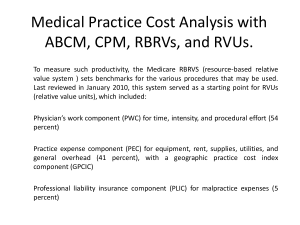
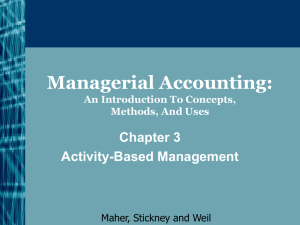
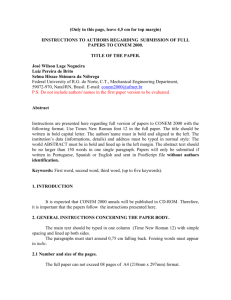
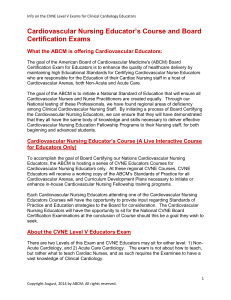
![Measuring the Cost of Public Services [809K Powerpoint]](http://s2.studylib.net/store/data/010210160_1-9dfc2c0304cae6508eeac3a9fbf5c791-300x300.png)

